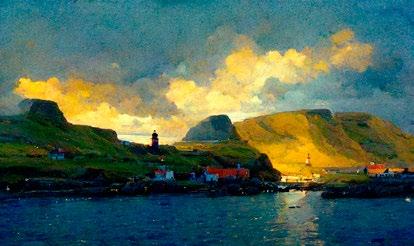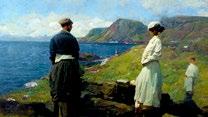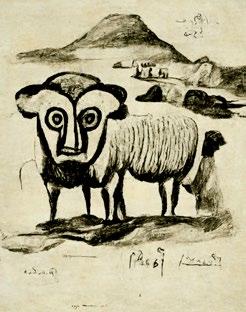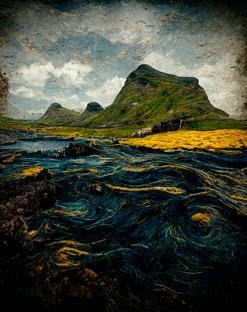Annual Report





























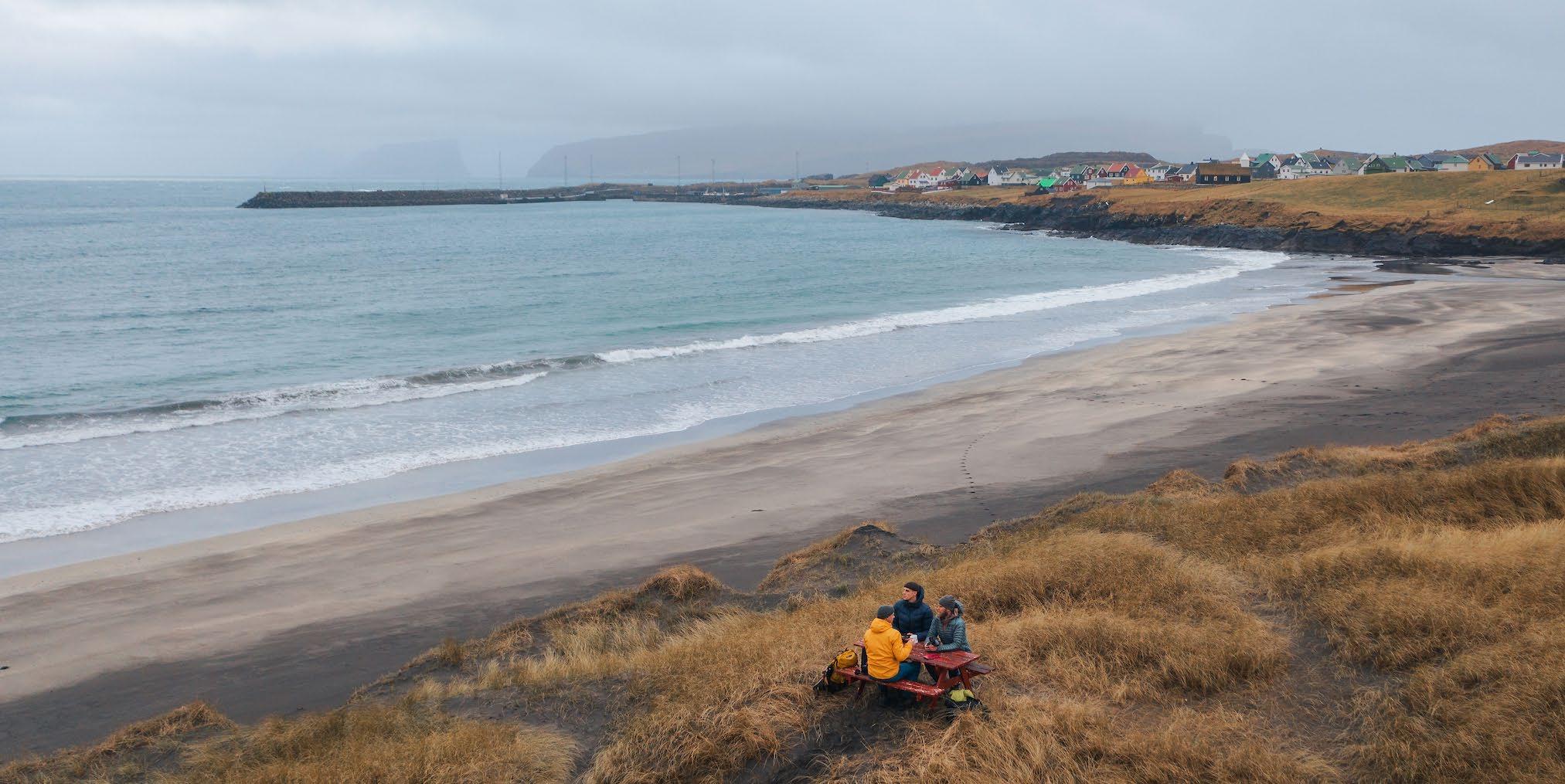
The turnover amounted to exactly DKK 900 million in 2022, compared to DKK 582 million in 2021. The turnover in 2019, before the pandemic, was DKK 784 million, making 2022 a record year. However, it should be noted that the largest part of the turnover growth in 2022 is due to increased inflation, where particularly higher oil prices have caused travel ticket prices to increase. Thus, the turnover growth in 2022 does not necessarily reflect well on the bottom line of the companies, which as a whole have had some challenging years, first in relation to the pandemic and then due to high inflation and interest rate hikes. Therefore, it will be of great importance for the economic viability of the Faroese tourism industry that 2023 becomes a good tourism year.
The increased expenditure can also be seen in the gross value added for tourism in the Faroe Islands, which amounted to DKK 347 million in 2022, compared to DKK 421 million in 2019.
The overarching goal that has been worked towards since 2012, that the Faroese tourism industry should reach DKK 1 billion in turnover, is still in sight. As is well-known, the pandemic slowed down the progress, but the hope is to reach DKK 1 billion in 2023, unless other unforeseen challenges arise.
The number of hotel accommodations increased from 173,913 in 2021 to 228,757 in 2022, despite the fact that the Faroe Islands only reopened in April after the pandemic. In comparison, there were 166,452 accommodations in 2019. Since the hotel capacity doubled in 2020, there is still some way to go to reach the same occupancy rate as before 2020. The occupancy rate in 2022 was 51% for the entire country compared to 53% in 2019, while the occupancy rate for Suðurstreymoy was 53% in 2022 compared to 67% in 2019.
Around 100,000 foreign tourists visited the Faroe Islands in 2022, compared to around 140,000 in 2019. Of those, around 70,000 arrived by air and 30,000 arrived by sea.
Many marketing initiatives were carried out in 2022, both in leisure tourism as well as in business tourism. Exhibitions, workshops, and other sales events were held in various markets, such as the Visit workshop, which was held in Løkshøll in April, where 50 foreign travel agents visited the Faroe Islands.

visited, including 36 Instagrammers. We also produced our own content and collaborated with more Faroese influencers more than usual. A new version of our website, www. visitfaroeislands.com, was also launched, which we worked extensively on over the past year.
Furthermore, we conducted a promotional campaign in collaboration with the National Art Museum of the Faroe Islands called /Imagine Faroe Islands, in connection with the launch of the new AI technology Midjourney. We asked the AI machine how famous artists who never had the opportunity to visit the Faroe Islands would have painted our islands. The museum thus hosted the first exhibition in the world of a national collection consisting solely of AI-generated images. At the same time, visitors to the museum had the opportunity to create their own pictures, and an Instagram campaign was launched where everyone could request their own image from the Faroe Islands. The campaign resulted in good PR in international media.
In 2022, development work in the Faroe Islands has continued to have a high priority. The website Bygdagøtur.fo was further developed and is now fully completed. The event "Closed for Maintenance" was held again in April, at 11 locations, and was once again successful. We entered into a collaboration with the National Agricultural Fund to establish a partnership for six months aimed at improving the integration of agriculture and tourism. Exciting pilot projects in transportation were also launched in Tjørnuvík and Kalsoy. Training courses in sustainable food preparation were also held for the industry.
2022. In just a few years, we have gone from being on par with Eastern Europe, further to Western Europe, and now to a Nordic position, albeit still at the lower end. We will continue to work on this going forward.
The development of sustainable tourism will also be one of the main priorities in the 2030 strategy, which we finally could start in the autumn of 2022, two years delayed due to COVID-19. The work is expected to be completed in the spring of 2023. We chose to take a bottom-up approach, which as far as we know is the first example in the world for an entire country. It will be exciting to continue working on this and to lay out the big plans for tourism. The possibilities are numerous, and we intend to make the best of them to benefit the Faroe Islands.
This annual report provides a closer picture of our operations in 2022.
Happy reading!
We welcomed around 150 foreign media personnel, including 47 Instagrammers. Although this is much less than a typical year, it is still more than in 2021 when only 100
I am happy that more and more emphasis is being placed on sustainability in the idnustry, and that the Faroe Islands have also achieved a higher ranking on the GDS index in
Guðrið Højgaard Director, Visit Faroe IslandsAccommodation at lodging facilities
228,757 +32% compared to 2019
Hotel rooms with environmental certification
33% +100% compared to 2019
Turnover from tourism
900 MILLION DKK compared to
Percentage of total Faroese export value
6% compared to 6.4% in 2019
GDS Index 2022
29th PLACE
Faroe Islands are on the TOP 30 list of sustainable tourism destinations
Score on a 5-point scale of tourists' satisfaction with experiences in the Faroe Islands Media and collaboration visits
150 compared to 226 in 2019
4.7 points -0.1 points compared to survey from 2018
In collaboration with Visit Faroe Islands (VFI), Statistics Faroe Islands collects accommodation statistics, as well as other key figures that show the significance of the tourism industry for the national economy and the number of jobs. In addition, visitor surveys are conducted in collaboration with Gallup.
In 2022, a total of 228,757 stays were recorded at the hotels in the Faroe Islands, compared to 173,913 stays in 2021, which was a COVID-19 year. For comparison, there were 166,452 stays in 2019, before the accommodation capacity was doubled in 2020.
The year 2022 was also marked by COVID-19 until the month of April, when travel restrictions were lifted, and foreign tourists once again visited the Faroe Islands. The COVID-19 years have brought about a major change in the proportion of stays. This is also evident in 2022, where the domestic market still accounted for a larger share of stays than before COVID-19. In 2022, 39% of foreign stays were purchased by Danes, compared to 60% in 2021 and 35% in 2019, before COVID-19.
Faroese residents accounted for 49,399 accommodations in 2022, equivalent to 22% of the total accommodations. This can be compared to 57,454 (33%) in 2021, 33,496 (35%) in 2020, and 30,628 (18%) in 2019.
small groups on leisure trips, but the number of business trips has been steadily increasing in recent years. However, the coronavirus has also had a negative impact on the number of business trips.
Most markets experienced growth in 2022 compared to 2021, which was a year marked by the coronavirus pandemic. The only market that declined was the domestic market.
89% of all accommodations were in the Suðurstreymoy. Most tourists come to the Faroe Islands as individuals or in
A major and new change in the accommodation statistics that Statistics Faroe islands has been collecting is that they from 2021 only include data from hotels and guesthouses and not other types of accommodation such as holiday homes and camping. This is because it has been difficult to collect data from other types of accommodations and to ensure the quality of the data. This naturally
Approximately 100,000 tourists visited the Faroe Islands in 2022. Of those, 70,000 arrived by air and 30,000 arrived by sea.
Organised
Total
leads to a lower overall figure than before and gives a worse picture of how many tourists actually stay around the country, given that most of the larger hotels are in Tórshavn while most of the holiday homes are located in and around the villages.
The statistics also do not include data from Airbnb and similar booking systems. This is because the American company does not publish its statistics. This is unfortunate for the tourism statistics, especially since all indications are that this is one of the fastest growing forms of accommodation in recent years. The total number of accommodations is therefore larger than previously mentioned. More
than 400 Faroese users have rented out their homes on Airbnb in recent years. The EU is working on forcing Airbnb to release its statistics, and we are following the developments.
The overall occupancy rate for hotels in the country was 51% in 2022. This can be compared to 42% in 2021, 31% in 2020, and 59% in 2019 before the pandemic. It should be noted that the hotel capacity has doubled during this period. The occupancy rate in Suðurstreymoy increased from 49% in 2013 to 67% in 2019, and down to 35% in 2020, 45% in 2021, and 53% in 2022.
The number of cruise ships increased significantly in 2022, compared to the pandemic years of 2021 and 2020. In 2022, 43 ships with 15,663 guests visited, compared to only 1 ship with 49 guests in 2021. In 2019, the year before the pandemic, 51 ships with 35,524 guests visited.
In 2022, a total of 228,757 accommodations were registered in the Faroe Islands
Since 2014, Statistics Faroe Islands has been examining the economic impact of purchases made by foreign tourists who visit the country. Locals are not included in the calculations. Reverse estimates have been made to 2011.

Foreign travellers purchased services and goods worth DKK 900 million in 2022, which is a new record. This corresponds to a growth of 55% compared to 2021 when turnover was only DKK 582 million due to the pandemic. Turnover in 2019, before the pandemic, was DKK 784 million in comparison. The increase from 2019 to 2022 is therefore 15%. In 2011, the turnover was DKK 384 million. Thus, the turnover has increased by more than 235% from 2011 to 2022.
Analysis shows that DKK 441 million, equivalent to 49% of the turnover in 2022, is generated by Faroese transport companies, ferries, and travel agencies (SAS and Widerøe are not included since their revenues are sent abroad).
900 million DKK in revenue
900 million DKK in export value
6% of the total exports in 2022
347 million DKK increase in gross value
646 full-time equivalent employees in 2022
DKK 172 million, equivalent to approximately 19%, comes from restaurants, food shops, and beverage products. DKK 136 million, equivalent to 15%, is from accommodations, and DKK 78 million, equivalent to 9%, is from domestic transportation and car rentals. The remaining percentages are divided among experiences, clothing sales, and other sales.
Most categories have recovered well after the significant decline due to the pandemic, except for the "Restaurants, food shops, and beverage products" category, where the revenue is at 80% of the 2019 level. The category "Transportation companies, cruise industry, and travel agencies" has increased by 33% from DKK 332 million in 2019 to DKK 441 million in 2022.
The revenue figures for Airbnb are not included. No new data is available for Airbnb. According to TAKS, they were at DKK 22 million in 2018.
No derived activities are included in the revenue for incoming tourism, such as significant investments made in recent years, including accommodation facilities. For instance, investments were made in accommodation facilities for nearly half a billion DKK in 2019/2020, which ended up in the construction industry and other service sectors.
Assessed for the years 2013 to 2022 and described in relation to the total export value
The gross value growth increased to DKK 347 million in 2022, compared to DKK 214 million in 2021. For comparison, the gross value added was DKK 421 million in 2019, before the pandemic.
The incoming tourism industry created 646 full-time jobs in 2022, compared to 495 full-time jobs in 2021, corresponding to a growth of 31%. The number of full-time jobs in 2022 is 91% of what it was in 2019, when there were 714 full-time jobs. In 2011, when the survey began, there were 385 fulltime jobs. 34% of the full-time jobs were within transport companies, such as ferries and travel agencies. 21% were within accommodations and 24% were within restaurants.
In 2019, it was estimated that at least 1000 full-time jobs were associated with the core activities of the Faroese tourism industry when considering not only incoming tourism, but also outbound travel. In 2022, these numbers are expected to be slightly lower.
It is estimated that around 70% of employees in the Faroese tourism industry are women.
Inbound tourism, i.e. foreign visitors who visited the Faroe Islands in 2022, accounted for 6% of the total Faroese export value. This can be compared to 4.8% in 2021 and 3.1% in 2020 - both pandemic years - and 6.4% in 2019, before the pandemic.
The revenue in 2019, before the pandemic, was DKK 784 million, thus the increase from 2019 to 2022 is 15%

Tourists are highly satisfied with their travel experiences in the Faroe Islands as a whole, and a large majority agree that the Faroe Islands are an exciting travel destination and intend to return. It is also interesting to note that some of those who have visited Iceland, Norway, and the Faroe Islands say that of these three countries, the Faroe Islands are currently the best place to visit because they find Faroese people welcoming and helpful and the nature especially magnificent.
This is according to a tourist survey conducted by Gallup for Visit Faroe Islands in 2022. The last major survey was in 2018, so we can compare some key figures from both surveys. Overall, there is not a big difference, and the numbers are still high and positive.
On a scale of 1 to 5, tourists were asked to rate the following main areas:
Value for money
4.3 2018:
Satisfaction with the experience
4.7
Unbelievable, unspoiled and unexploited
Recommendation to visit the Faroe Islands
4.7

The main reason for most tourists to visit the Faroe Islands was nature, wildlife, and the environment as a whole (62.7%), while 15.3% came to visit family and acquaintances, 6.2% said the Faroe Islands were their dream travel destination. Other reasons mentioned were cultural events, business, or due to history and archaeology. When asked if there were too many tourists in the Faroe Islands, most (87.7%, compared to 85.3% in 2018) answered "no", while 12.3% answered "yes". Of those who answered "yes", 20.5% said that there were too many tourists in Mykines. Other places that were also mentioned in this context were Tórshavn (19.2%), Gjógv (19.2%), Saksun (12.3%), and Tjørnuvík (9.6%).
Most of the tourists in the survey were from Denmark (23.2%), while 10.4% were from France. Then came tourists from the USA/Canada (10.4%), Germany (6.1%), Italy (5.9%), the Netherlands (4.9%), and the United Kingdom (4%).
A large majority of the tourists (79%) believed that they got value for money. However, a small minority of the tourists were very clear about how they felt that this was not true for them. They specifically mentioned that the prices in the Faroe Islands are too high. Several also say that the price for hiking in the mountains is too inconsistent, as they pay different prices for more or less the same type of hikes, without getting any real service for the money, as no guide or other services are included in the price. Some tourists prefer to pay a one-time fee or a proportional fee when they arrive in the country. Others prefer the option to pay
for one, two, or more tours, for example, when they arrive in the country.
The majority of the tourists surveyed said that the best experience was the Faroese nature (56.5%), while 18.3% said hiking tours and also 7.7% said that the Faroese people were the best experience.
Most of the surveyed had no negative experiences on their trip (51.6%) and 76% would recommend a trip to the Faroe Islands. However, some had some negative things to mention about the trip. 13.4% said that the prices were too high, 11.4% mentioned too few restaurants outside the capital, while 7.2% had negative experiences with the national bus and ferry operators. 6.6% mentioned a lack of information and signage for tourists as a whole. Specifically, they mentioned signage related to road conditions, hiking trails, cafes, restaurants, shopping, cultural events, and other activities, etc.
The survey was conducted from July 22nd to August 22nd, 2022. 595 tourists agreed to participate in the survey. Most of the interviews (80.2%) took place in the Tax Free area at the airport in Vágar, while 19.8% of the interviews were conducted at the dock in Tórshavn. The entire Gallup survey can be read on the Visit Faroe Islands website.

The majority of the surveyed tourists said that the best experience was the Faroese nature (56.5%).


Tourism is among the industries that have grown the fastest in recent years globally. According to the WTO, growth has been 4-5% annually.
The pandemic has had a very disruptive impact on the industry in 2020, 2021, and to some extent in 2022, and will have implications for several years to come in the global market, perhaps even until 2025. However, the expectation is that tourism in the Faroe Islands can recover faster than that, which is also visible in the statistics for 2022.
Although the Faroe Islands lack new economic statistics from 2003-2012, it can be confirmed that our growth historically has been much lower than in the other countries around us, and the same is true for the number of accommodations.
The low number of tourists compared to other countries was the basis for the strategy that Visit Faroe Islands initiated in 2012, in close collaboration with the industry. The industry needed more customers to speed up developments, so it was decided to focus on marketing development over product development in order to achieve growth in tourism in the Faroe Islands. In recent years, we have seen growth, and therefore a new department for development was established in 2018. It is significant that growth and domestic development go hand in hand.
The Faroe Islands have great potential as a tourist destination. For the discerning traveler, the Faroe Islands offer a unique experience that cannot be found elsewhere. But without a strong knowledge of the Faroe Islands and continuous effective marketing, the Faroe Islands will be lost among the many travel offerings in the world. In order for the industry to become financially sustainable, continuous growth is required. This is especially important after the pandemic, as the industry has experienced significant financial setbacks, while the capacity for accommodation has doubled and international competition has significantly increased.
The strategy that has been worked on until 2020 was initiated in 2012. It has been necessary to wait with the 2030 strategy until both the global tourism and the Faroese tourism industry was back in operation.
All marketing efforts should be coordinated based on a common tourism brand for the Faroe Islands to achieve maximum impact.
Working to create the best possible frameworks for the industry. The legislation must be improved in a way that provides a secure framework and greater opportunities for service providers.
Contributing to developing the industry sustainably throughout the entire country through close collaboration. Advising on product development, investment development, and training, as well as providing financial support for regions and businesses.
Visit Faroe Islands is working on formulating a new longterm strategy for tourism towards 2030 - and invites all Faroese people to participate in the process with the first bottom-up strategy of its kind in the world.
The goal of this endeavour is for the new strategy to be well aligned with the desires of the Faroese people and to have as much impact as possible on how tourism develops in the Faroe Islands. Therefore, it is essential that as many Faroese as possible participate in the discussion about tourism in the Faroe Islands.
Sustainable tourism involves finding a balance between the well-being of those who live in the area, preserving our nature, making tourism sustainable as a business, and providing a good experience for visitors. Such balance can only be achieved through an open and public conversation about what we want from tourism in the Faroe Islands.
In addition to meetings and workshops with a broad range of Faroese people from all corners of the country, Visit Faroe Islands has gathered feedback from around 500 Faroese people about tourism. The work is expected to be completed in the first half of 2023.
Tourism shall become a new cornerstone of the Faroese economy, which shall develop in a sustainable way with respect for the Faroese people, the environment, and the economy. Faroese tourism shall double and generate at least DKK one billion in revenue by 2020.
New long-term goals shall be set in the 2030 strategy, which will be formulated in the first half of 2023.
Together, we shall put the Faroe Islands on the global map as a unique, interesting, and sustainable tourism destination. New long-term goals shall be set in the 2030 strategy.
All of this would have been achieved if the coronavirus pandemic had not affected the world. Tourism in the Faroe Islands has been almost non-existent in 2020 and 2021. In 2023, the focus will be on recovering the lost ground and achieving the 2020 goals. More accommodations will give the lodging establishments a higher occupancy rate, and increased revenue will benefit the entire industry. Jobs will be created in all parts of the industry, ranging from tour op -
erators, experience providers, transportation companies, hotels, and restaurants to sales and marketing functions. Other sectors of the economy will also benefit from this growth.
Visit Faroe Islands has the task of marketing the Faroe Islands as a tourist destination on the international market and developing the Faroe Islands as a tourist destination. In recent years, marketing has focused on extending the tourist season and promoting the Faroe Islands as a year-round destination. The goal is to ensure that all parts of the tourism industry can be active year-round and thereby ensure steady employment for the workforce. This is done, among other things, by developing business tourism, which was also part of the Growth Forum project of the Faroese government.
Development work plays a major role in preserving the Faroe Islands as a sustainable tourist destination, with the goal of developing and preserving the islands at the same time.
Visit Faroe Islands has been working on marketing the Faroe Islands on selected markets in recent years. These are chosen based on their proximity to the Faroe Islands, where it is assumed that the familiarity with the Faroe Islands is highest, making it easier to attract more tourists quickly. In recent years, sustainability has also been a basis for ranking the markets, which are close to the Faroe Islands, so that tourists do not have to travel too far to get here. The markets that have been ranked are the Nordic countries, Germany, Great Britain, the Netherlands, Italy, France, and in recent years, also the USA, with particular emphasis on the east coast where there is a lot of familiarity with Iceland, which we can use in our work.
The work of creating a new long-term strategy for marketing and development from 2023 and beyond is underway. For more detailed information about the strategy, it is best to contact Visit Faroe Islands directly.
Goal 2023 1 billion in revenue
Goal 2023 700 jobs
Goal 2023
250,000 overnight stays
New long-term goals will be set in 2030 and the strategy will be developed in the first half of 2023
The purpose of Visit Faroe Islands is to coordinate, develop, and promote the Faroe Islands as a tourist destination in order to create growth within the Faroese tourism industry.
Visit Faroe Islands works with the three C’s: Collect , Coordinate and Commercialize the Faroes as a travel destination.
VFI (Visit Faroe Islands) shall work closely with industry and authorities to market and develop the Faroe Islands as a tourist destination, targeting selected markets and segments. VFI shall be a dynamic locomotive with core competencies within marketing, development, and know-how, which shall collect and coordinate all work, both within and outside the Faroe Islands towards the markets
The budget approval for Visit Faroe Islands in 2022 was DKK 18.4 million, and it was used as follows:
· DKK 8.0 million for marketing activities
· DKK 3.1 million for cultural activities
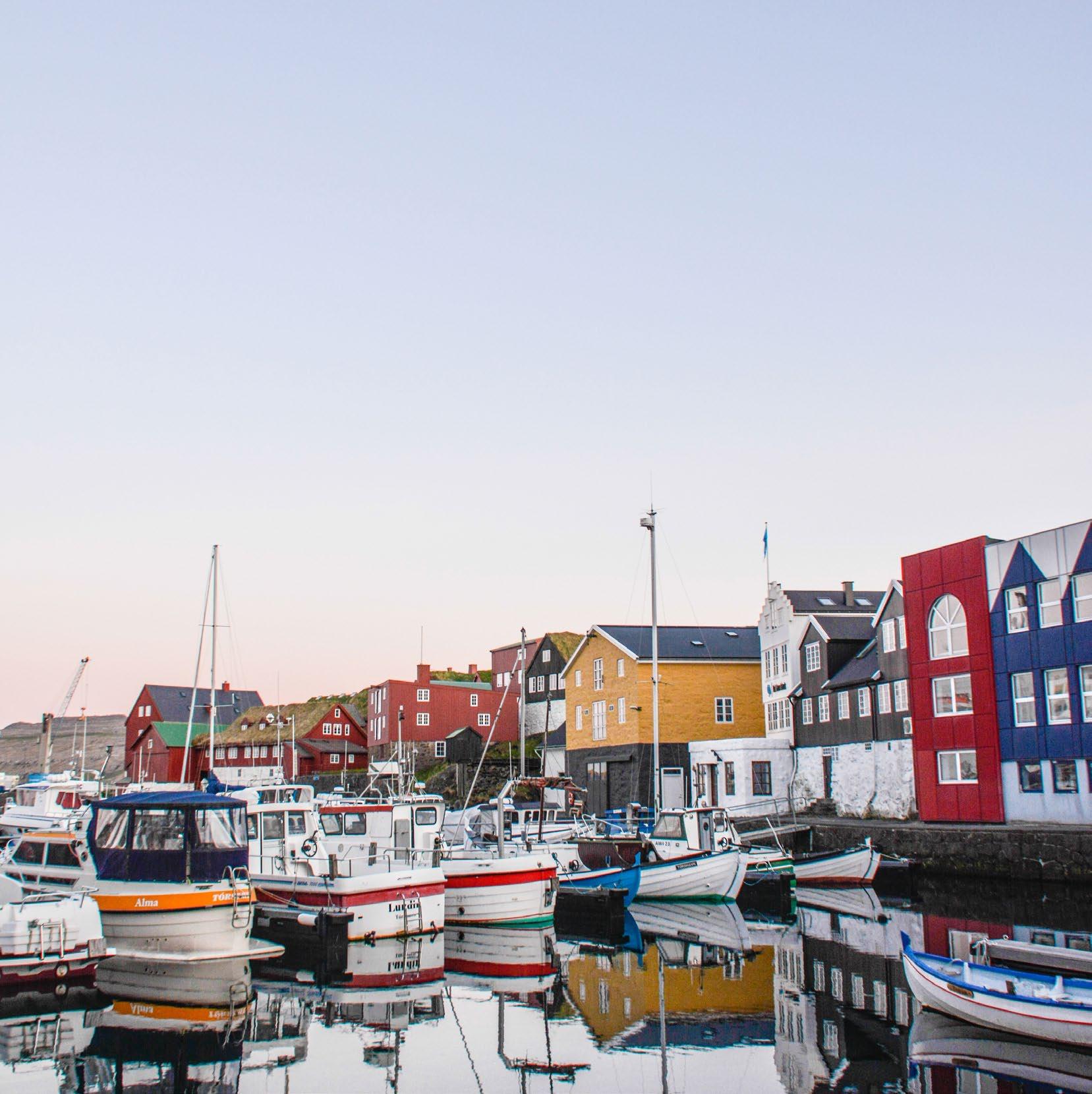
· DKK 7.3 million for administration/operation/salaries
VFI also administrated the DKK 0.5 million, which are allocated for support in the NATA cooperation between Iceland, Greenland, and the Faroe Islands.
COMPLETED IN PROGRESS
Launch updated version of visitfaroeislands.com

Complete construction of bygdagøtur.fo website
Initiate project for agriculture tourism
Conduct pilot programs for transportation in Kalsoy and Tjørnuvík
Organize international Faroese Closed for Maintenance event
Business capacity development and interest in sustainable food tourism
Further growth of social media followers (to 545,000)
Fully integrate tourist information centres into our website solution
Develop MICE 2030 strategy in Vakstrarforum
Sustainable tourism and procurement policies
Green Key certification
Achieve a Nordic average in the GDS index for 2025
Further development of Unordinary Meetings
Action plan for Business Tourism, Visit Faroe Islands, Visit Tórshavn, and Tórshavn Municipality.
Marketing Leisure & PR
Director
Marketing Business Marketing Digital
Office management
Accounting
Content & Communication
Development
The purpose of the brand is to unify the tourism industry under a common message, so that the Faroe Islands as a tourist destination can become stronger and more visible.


The joint branding was one of the most significant keywords for success when the decision was made for the Faroe Islands to have a common tourism brand, which all marketing of the Faroe Islands should be based on. The Faroe Islands were to move from the group of countries that did not have a clear profile to standing as a unique and exciting destination in the minds of the target audience. A country people want to visit, never soon enough.
The tourism brand was unveiled at a major event at the Nordic House in 2013, where the first branding film was also premiered. It can only be said that the brand was very well received. The films have since won numerous international awards.
It is a fact that more tourists visit the Galapagos Islands annually than the Faroe Islands. That the Faroe Islands are untouched and unexplored is one of the most interesting things about the destination.

With the words "Unspoiled, Unexplored, Unbelievable" and an "un" prefix in key words in the descriptions, it is emphasized that the Faroe Islands are something you have not experienced before. This sets the destination apart from the "bigger and better" destinations. The Faroe Islands are unique in themselves and different from all others.
The brand is easy to use in all media, can be used in all relevant languages, and can sell the Faroe Islands all year round. Feedback from tourists shows that the brand is still strong and relevant after almost 10 years. With this in mind, the decision has been made to reassess and modernize the brand, and work on this is expected to be completed in the second half of 2023.
Tourists were asked in a Gallup survey in 2022 to indicate how they felt about the slogan of Visit Faroe Islands, "Unspoiled, Unexplored, Unbelievable". 82.7% agreed or strongly agreed with the VFI brand, while only 3.2% disagreed. 14.1% said they were neither in agreement nor disagreement. The average score was 4.2 (on a scale of 1-5), which is a slight decrease compared to a similar survey from 2018, which had an average score of 4.4.




Visit Faroe Islands is the owner of the brand, while everyone in the industry is invited to be users. The brand is intended to provide added value to various offerings while also encompassing their own collective and strategic sales messages.
Additionally, we encourage all Faroese to use the brand in their networks, whether they are out at events as representatives, in their digital channels, and so on. A brand book has been created for this purpose with a detailed explanation of how the brand can be utilized.
For further information, please contact Visit Faroe Islands.
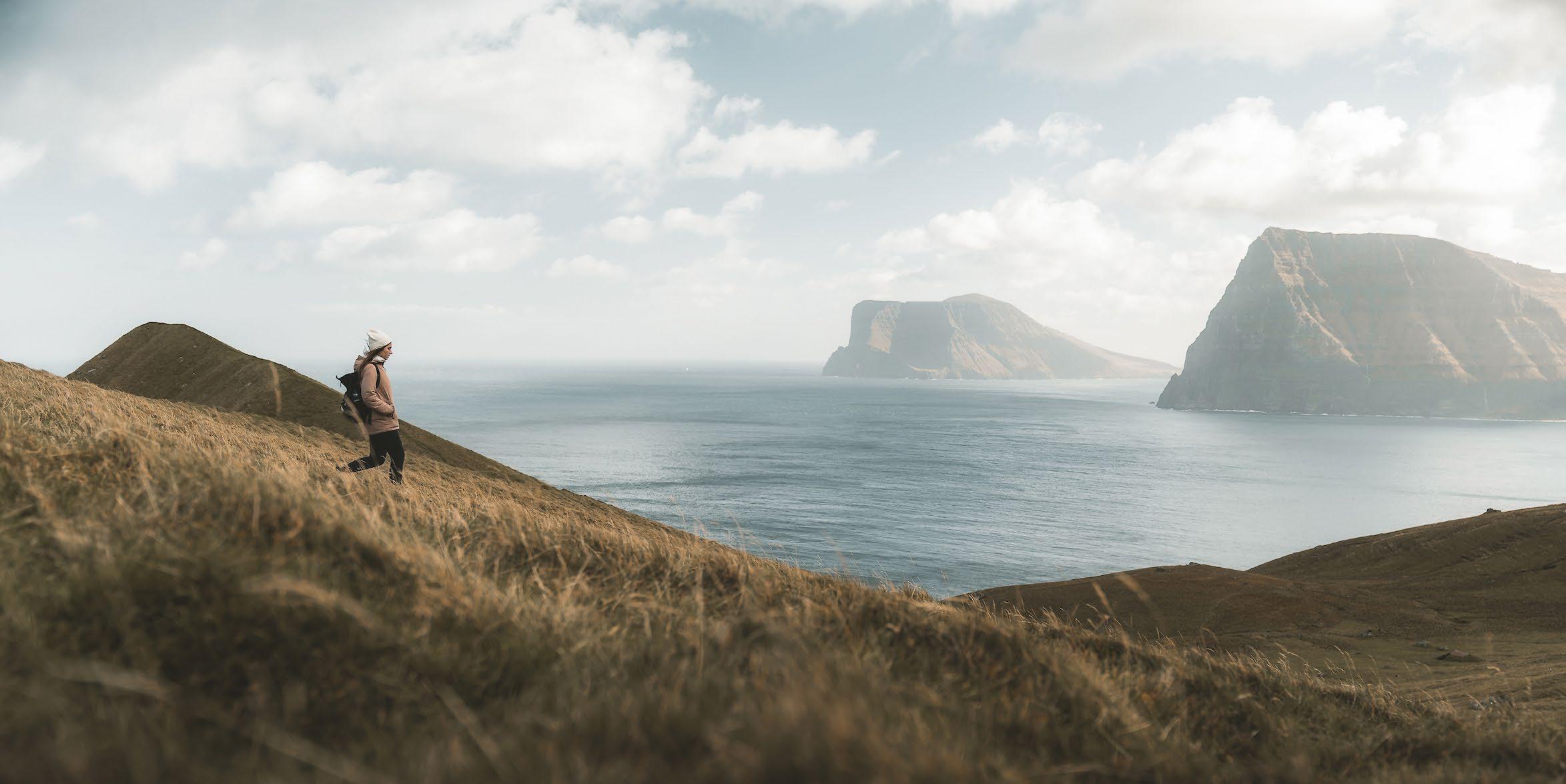
We acknowledge that tourism has an impact on the society, people and nature we operate in. Big issues can only be addressed through working and collaborating together. Therefore, we strive for transparency in our operations.
We want to encourage sustainable development and growth without compromising the natural resources for future generations. We aim to create a sustainable and meaningful environment in our business, where we consciously work towards an even more sustainable tourism industry.
nesses, travelers, and tourism providers has been ongoing. We have developed sustainable policies, procurement policies, and a sustainable guide (toolbox) in connection with events, as well as some helpful tips for travelers to make sustainable decisions when visiting the Faroe Islands.
We have set ourselves the goal of achieving these three sustainability goals by 2030.
As part of the work to achieve the UN Sustainable Development Goals, new ideas and other important goals have been introduced that we have set ourselves to achieve in the coming years.
By 2030, 80% of the Faroese population will have a positive attitude towards tourism and business tourism. The goal is to reach 70% by 2025.
In 2022, we have achieved a positive attitude of
71% (Goal for 2030: 80%)
This is not an easy task that we can solve on our own, but with small sustainable solutions in our work, we get closer to this goal every year.
Campaigns and daily operations carried out by Visit Faroe Islands throughout the year must reflect good and sustainable solutions. In 2022, we set out to develop our sustainable long-term plan for tourism within a structured framework. This includes a new tourism plan for the Faroe Islands, running up to 2030, which will be integrated into the Faroese community and aim to achieve a well-organized and sustainable tourism industry.
In 2022, our work to provide sustainable guidance to busi-
Visit Faroe Islands is also in the process of obtaining a "Green Key" environmental certification.
In 2022, the work began on formulating a sustainable agenda. At Visit Faroe Islands, we acknowledge that any stakeholder interested in preserving the Faroe Islands is an individual in the matter, and therefore, we all have a role to play in preserving the main objectives outlined in the upcoming agenda.

The agenda aims to develop sustainable practices in the Faroese tourism industry and support the efforts to achieve the UN's sustainable development goals.
Visit Faroe Islands is well on track to achieve these goals. According to a survey conducted by Spyr.fo in 2022 on tourism in the Faroe Islands, the satisfaction among Faroese residents is at 71%. The situation is also progressing for accommodations, with 33% of our hotel rooms having an environmental certification. For other accommodations, the situation is also progressing, as both Greengate Incoming and 62n have implemented sustainable policies, and we expect to see more positive numbers for other accommodations in 2023.
By 2030, 80% of our hotel rooms will have an environmental certification. The goal is to reach 50% by 2025.
Environmental certification in 2022
33% (Goal for 2030: 80%)
By 2030, 90% of our tourism providers have a sustainable policy. The goal is to reach 70% by 2025.
The numbers will be available in 2023
..% (Goal by 2030: 90%))
We aim to work in accordance with these seven UN Sustainable Development Goals:



WE WISH TO:
• work towards excellent education and have an industry that offers lifelong education
• improve the skills of our industry workers, both young and old, so that they have up-to-date and relevant skills and education. We also want everyone to have the opportunity to participate in skills development, so that the difference between men, women, age, people with special needs, ethnic background, etc., is reduced.
• collaborate with the Tourism Association and educational institutions on awards, internships, and other initiatives that can promote interest in excellent education.
We will continuously provide courses on sustainable development.
WE WISH TO: create respect for clean water in the Faroe Islands. We want to promote a responsible use of water and work towards ensuring that tourism does not become a burden on water usage ensure that tourism plays a role in managing water usage, and that wastewater is treated and used in circular systems as far as possible. This includes minimizing the use of water for taps, showers and toilets. provide free refill stations for tourists to fill their own water bottles at designated locations.
We use tap water for all our activities and meetings.
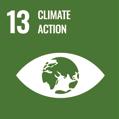
WE WANT:
• to support the climate policy set by the Faroe Islands and the international community.
WE WISH TO:
• preserve wetlands and protect biodiversity.
• halt the degradation of nature and wilderness.
We want to do this by engaging in the project of the National Museum, supporting it, and promoting it as an opportunity for tourists to do something good for society. We also want to offer wetland areas as part of the Closed For Maintenance initiative.
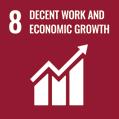
WE WISH TO:
• ensure an annual economic growth in tourism, with a good increase in value and support for entrepreneurship. With this, tourism will expand its operations in the Faroe Islands and create more interesting jobs.
• ensure that tourism companies in the Faroe Islands have Faroese ownership.
• provide equal pay for equal work regardless of gender, ethnic origin, or specific needs, and have a significant proportion of the workforce aged 15-24, so that tourism becomes attractive to this age group.
• obtain an environmental certification and demand from partners and providers within a deadline that they also have it and/or a sustainable policy.
We prioritize buying local products. We also advise guests on experiences beyond the usual popular ones.
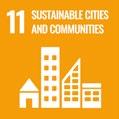
WE WISH:
• to strengthen the use of public transportation and sustainable traffic by making it easier to use public transportation services around the Faroe Islands.
• that everyone should have access to nature and that towns, villages and nature encompass everyone, including people with disabilities.
• that visitors should have access to bicycles and other sustainable transportation, such as access to charging stations for electric cars.

WE WISH:
• a sustainable and efficient use of our natural resources.

• to reduce food waste.
• to reduce the use of genetically modified organisms in our production.
• to separate waste according to guidelines, so that as little as possible is burned and as much as possible is recycled.
We have a procurement policy. We have a sustainable policy.
We want to encourage sustainable development and growth, without the natural inheritance worsening for future generations.
The Business Tourism Department at Visit Faroe Islands and the industry as a whole have made good progress, as seen on the GDS Index.
The state of the Faroe Islands as a travel destination has greatly improved where we made it to the top 30 list of sustainable destinations on the GDS Index for the first time in 2022. Providers in business tourism have also seen an 81% increase in growth. For Visit Faroe Islands as a destination management organization (DMO), the improvement has been 80% over the past few years.
Overall, since the Faroe Islands were included in the GDS Index in 2020, we have climbed from 47.2 points to 73 points, a progress of 55%. This means that we have also moved from an Eastern European position to a Western European position. We still have a good chance of reaching our best neighboring countries, as the Nordic countries are at the top of the GDS index.
SUSTAINABLE ACTION TOOLBOX
3. Collect name tags and conference tag ribbons after the event

2. Provide tap water instead of bottled water
1. Serve local cuisine instead of organic food
Please don't hesitate to get in touch with us if you have any concerns or questions about travel in the Faroe Islands. We would be happy to help you in any way we can.
Guðrið Højgaard Director
Phone: 55 61 35 guri@visitfaroeislands.com
Bárður Eklund Digital Manager

Phone: 55 61 37 bardur@visitfaroeislands.com
Marta Káradóttir PR & Communication
Phone: 25 61 39 marta@visitfaroeislands.com
Olivia Døgg Frífinsdóttir Social Media Assistant
Phone: 55 61 32 olivia@visitfaroeislands.com
Vanja Davidsen Office Staff
Phone: 55 61 40 vanja@visitfaroeislands.com
Fríðgerð Heinesen Accounting
Phone: 55 61 34 fridgerd@visitfaroeislands.com
Johannes Jensen Gist&Vist, Chairman
Bjørgfríð Ludvig Tórshavn Municipality
Jens Meinhard Rasmussen Smyril Line
Johanna á Bergi Atlantic Airways
Sakaris Frederiksen Tourism Association
Elin Heðinsdóttir Joensen ÍSF

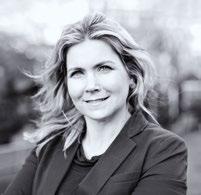
Marjun Niclasen Visit Runavík
Súsanna Sørensen Marketing Manager, PR & Leisure

Phone: 55 61 38 susanna@visitfaroeislands.com
Jóhan Pauli Helgason Development Manager

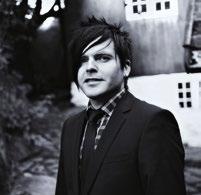
Phone: 55 61 31
johanp@visitfaroeislands.com
Annleyg Lamhauge MICE
Phone: 55 61 36 annleyg@visitfaroeislands.com
Alda M. Egilstrøð Development Coordinator


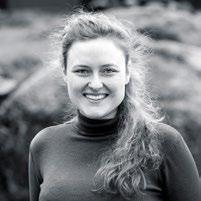

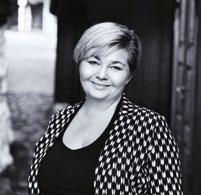
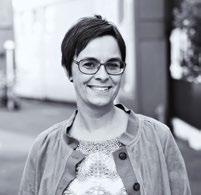
Phone: 55 61 33 alda@visitfaroeislands.com
Rasmus S. Biskupstø Assistant
Phone: 55 61 39 rasmus@visitfaroeislands.com
Oyvindur av Skarði Ministry of Foreign Affairs and Trade
Súsanna Samró MICE Visit Tórshavn
Phone: 25 09 05 samro@visitfaroeislands.com




